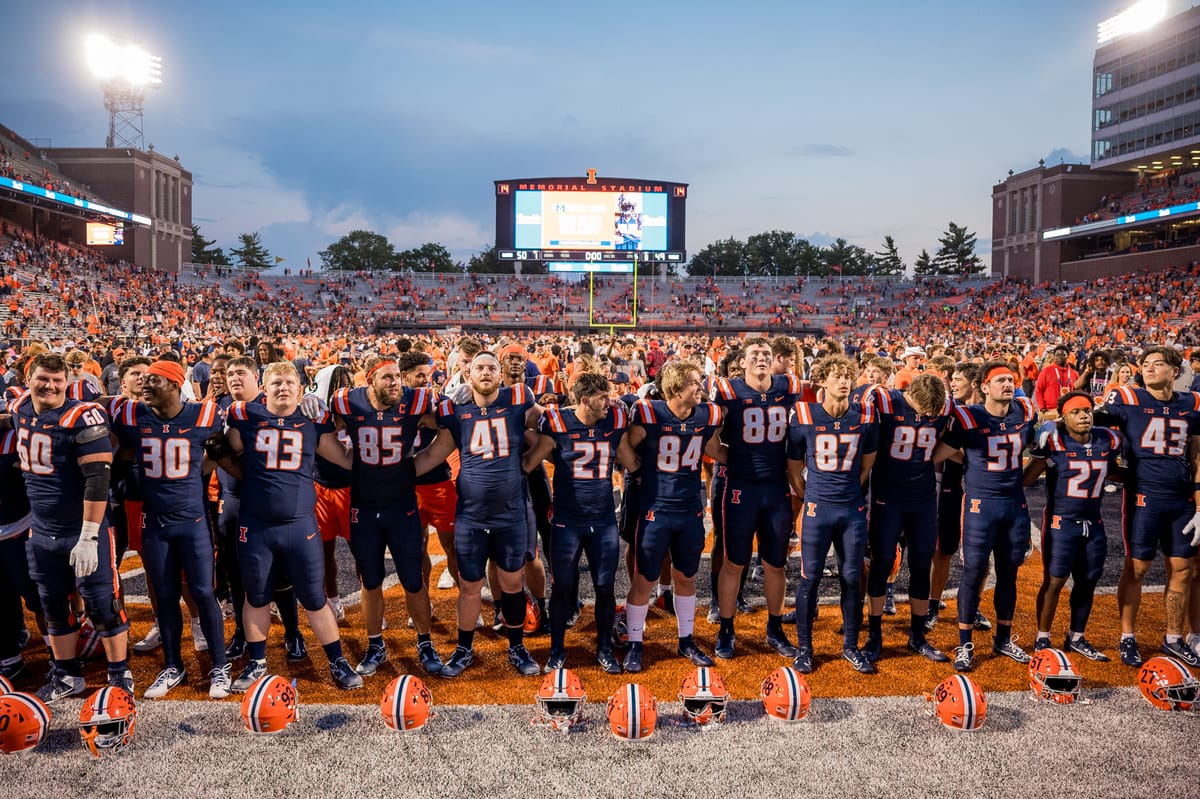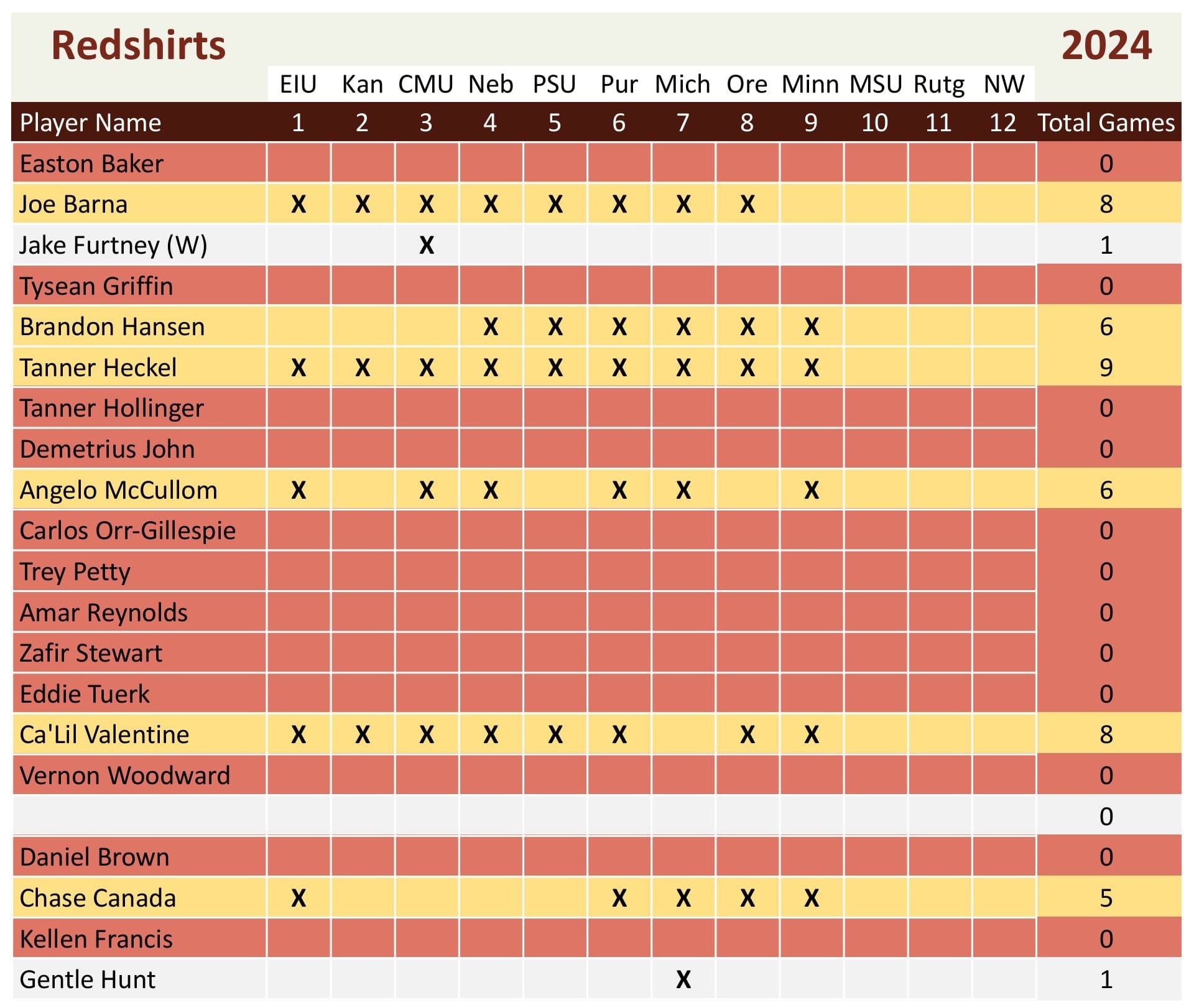Second Bye Week Tradition - 2026 Depth Chart

You know the traditions by now.
First off, if Illinois football has a bye week, I'm probably going somewhere with my wife and you won't hear from me for a bit. Since I travel to every home and away football game, the only Saturdays we get in the fall are the bye weekends. This weekend was a trip to see family and friends in St. Louis.
(And also a trip to see the Blues/Captials game on Saturday night which was, and I'm being serious about this, the most lackadaisical effort put forth by a professional team I may have ever seen in person. It's like they wanted Ovechkin to break Gretzky's goals record on Saturday night even though he's still 30-some goals away. He "only" had two in the Caps 8-1 win.)
You also know that if there are two bye weeks in a season, for the second bye week, I put together a depth chart two seasons down the road. But let me acknowledge from the start: in college football in the 2020's, this is a somewhat pointless exercise.
OK, it's not "pointless." It can tell us what kind of roster we might have (will it be "should be a lot of players coming back" or "so many starters will graduate from the previous season"?). But there will be maybe 15-18 transfers added between now and the start of the 2026 season. And it's really hard to say what the actual lineup will look like until those transfers are added.
Five years ago, you could say with 75% certainty what the team would look like in two years. Now? I don't know, 40%? 50? You don't know who is leaving and who is arriving.
Which is why even my redshirt chart has lost its luster. In years past, these redshirt decisions meant a lot. Now, offensive lineman Brandon Hansen has played in six games, almost all on field goals and extra points, and I can hardly muster my typical "man, I wish we had those snaps in 2028 instead of 2024" take. We're simply in the "when players are ready they will play" era.
I mean, just look at someone like Hunter Whitenack. I feel like the Hunter Whitenack scenario will play out a lot more often than some "the staff shut that player down after four games as a freshman to retain a year of eligibility for the future" scenario. Whitenack basically had Hansen's current season back in 2022: played as a true freshman but mostly on field goals and extra points. This season, his junior year, Whitenack played in the first four games and then hasn't played since. Which means he's preserving this year of eligibility and (I'm guessing) will transfer after the season with two years of eligibility elsewhere instead of one. His redshirt year was saved until he could do something like this.
The way I look at it: before the portal (and the "play in four games and still redshirt" rule change), the redshirt was a thing that coaches would utilize. If this was 2014, the coaching staff might have urged Brandon Hansen to redshirt this year in order to preserve his eligibility for a fifth season in 2028. Now, it feels like something the players will utilize. Each year, if they're playing, a decision comes after four games whether they're playing enough to warrant using one of their four seasons.
Bret Bielema has said before that he has proposed "5 to play 5" to the NCAA. Just get rid of redshirts. Every player has five years and when they play, they play. Maybe that happens soon, maybe it doesn't, but I can tell you that the redshirt chart reads differently now than it did in 2018 when I made the first one. Now it's more of a "these are the players playing early" chart:

The players in red there could now play in the remaining three games + the bowl game and still retain their redshirts (not use a year of eligibility). The players in yellow have already played in more than four games and have used that year of eligibility. And for walkon tight end Jake Furtney and transfer defensive lineman Gentle Hunt, they've both played in one game which means they could only play in three of the remaining four games to retain eligibility.
Which takes us to the 2026 depth chart. For a guy like Hunt, it doesn't matter since his extra year of eligibility would be used next year and he'd be gone by 2026. But for everyone else, we now know their future eligibility. Anyone in red above will be a redshirt sophomore by 2026. And everyone in yellow will be a junior.
First the depth chart, then the discussion. A few things to remember:
- I'm assuming everyone will be here. Will some of the players transfer by then? Absolutely. But as of now, this is assuming everyone stays.
- This is for 2026, not 2025. Current juniors will be gone by then. We are looking two years in the future.
- I go back and forth between a three-deep and a two-deep here based on the positions. For example, as of right now we know 10 offensive linemen on the 2026 roster. Through transfers this offseason and the next (plus next year's recruiting class) we will fill out the rest of the three-deep. But at WR, we know nine names so I'll go with a three-deep.
- I'm going to list every incoming 2025 recruit as a sophomore in 2026 since we just don't know if they'll redshirt or not next season.
- The asterisk for Tanner Rusk means he would need a medical redshirt approved for this season to still have eligibility in 2026.
To the depth chart:
